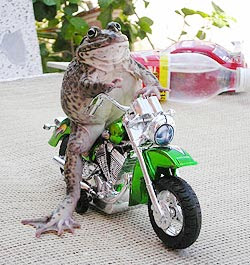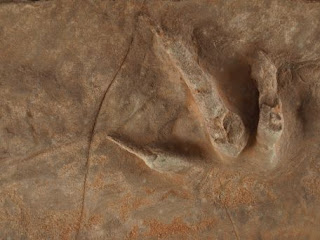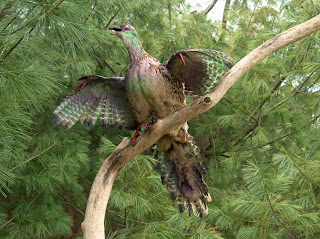Characteristics of a Biotic Community
In any natural environment of only one species cannot exist by themselves. It is always a group of population that live together in the same area. An association of a number of different inter-related populations of different species in a common environment in a nature forms a Biotic Community. The members of a biotic community can be producers, consumers or decomposers. The members of a biotic community are all interdependent. A biotic community may be small or large e.g. pond community occupies a limited area while the desert or grass land communities could spread to miles. A biotic community may primarily be of plants or animals and generally includes both. As different species share a common environment, number of direct or indirect interactions exists between them inside a biotic community. A biotic community interacts with the abiotic factors and forms an ecosystem.
Cells – Tissues – Organs – Organisms – Population = Biotic Community
Every biotic community needs abiotic factors for survival. At times the dominance of one factor determines the predominance of particular kind of population in a biotic community. For example: In a biotic community of fruit bearing trees the frugivorous bats and insects would be in plenty. A grass land biotic community has seed eating birds, mice and predatory birds living on small insects. A damp marsh has frogs, toads, fish, water insects and water birds that feed on small creatures. Aquatic plants of different kinds adapted for different intensities of light at the surface or at different depths would be present in a biotic community.
Interspecific Interact
ions in a Biotic Community
When various species live together in a biotic community, numbers of interactions take place according to specific needs of food, shelter and habits. We will discuss some of these in this chapter.
1. Predation 2. Scavenging 3. Parasitism 4. Commensalism 5. Symbiosis 6. Competition
1. Predation
Predation is a direct and often complex interaction of two species in a biotic community. The stronger animal called predator captures and feeds on the weak animal called prey. The decline in number of predators leads to a increase in number of the prey. An increase in the predator population leads to decrease in the prey population in a biotic community. These fluctuations play an important part in regulating natural population. Examples: Tiger feeds on deer, owls on rats etc. At times an animal could be a predator as well as a prey.
2. Scavenging
Scavenging is a direct food relationship where animals called scavengers feed on other dead animals which have either died naturally or have been killed by another animal in a biotic community. They play an important role in a biotic community as food is not wasted and also is disposed off. Examples: - Vulture feeds on dead bodies. Hyenas and jackals feed on left over killed animals by lion. They may feed on big animals like zebra and giraffe killed by other animals.
3. Parasitism
Parasitism is a negative interaction in a biotic community where one not only derives nourishment but also lives a part or the whole of life on another organism. The parasite is an organism that lives on another organism, the host from which it obtains food as well as shelter in a biotic community. It could be between animals between plants or between animals and plants in a biotic community. In the host – parasite relationship the weak attacks the stronger. It is beneficial to parasite and harmful to host. Generally a parasite may cause an illness but not kill the host except in severe cases. There may be number of parasites on one host.
4. Commensalism
In Commensalism one organism or a population is benefited while the other is neither benefited nor harmed. In some cases the host may be able to derive some minor benefit. There is no physiological exchange of any kind. The association may be temporary or permanent in a biotic community. Example
: Remora – a small fish attaches itself to the lower side of a shark. Remora feeds on scraps of shark's food and is not harmed.
5. Symbiosis
Symbiosis is an association of two populations in a biotic community where both the populations are benefited. There is often a close or permanent association. In some cases both are so interdependent that neither can live alone in that biotic community.
6. Competition
The two species in a biotic community interact in such a way that it affects their growth and survival. Both the species share the same resources like water, nutrients, space, sunlight, food, etc of a biotic community. Members of both species compete to survive in that respective biotic community. There is a direct inhibition of one by another. Many a times there is no set pattern as any one can succeed. Examples:- Carnivorous animals like tiger and lion compete for the prey. Trees, herbs and shrubs compete for sunlight and nutrients in a biotic community.
7. Some Passive Interactions
There are many interactions that exist in nature of a biotic community in between the animals, or between animals and the surrounding, which also help an organism to survive in that biotic community. Camouflaging – The blending of an animal with its surrounding is called camouflaging. It is also known as protective coloration. They camouflage their body shape and colour to suit the environment. Examples:- Stick insect Carausius morosus resembles a thin dry branch. Dead Leaf butterfly Kalima parolecta resembles a dry leaf. Praying mantis Mantis religiosa resembles the green foliage. Mimicry – Mimicry is also a type of protective resemblance in a biotic community. In this an animal mimics another animal so as to avoid predation. The viceroy butterfly mimics the common Monarch butterfly which is avoided by birds for its unpleasant taste.
Other Interactions
There may be many other interactions which may not be apparent. The association of birds and animals bringing about seed dispersal and pollination. The birds feeding on ticks – the parasites on the body of cattle. The red billed and yellow billed ox peckers perch on the black rhinoceros of Africa and feed on ticks and thus make the animal rid of the parasites to survive in a biotic community. They also warn the animal of the approaching danger. The rufus woodpecker makes a nest in a hole in the ball shaped nest of the ants. The ferocious ants do not harm the eggs or young ones but the birds feed on these ants and keep a check on their population to continue their generation in a biotic community.
Biotic Stability
A biotic community is a naturally occurring assemblage of plants and animals living in the same environment. They all interact to make the
community stable. It has been seen that more the number of species, more stable is the community. For example a biotic community containing a large population of Eucalyptus or any other plant may be totally wiped out by a fungal disease or insect infestation. But if a biotic community contains many species and kinds of plants, only one would wiped out at a time and the rest would survive. Example – In Serengeti plains of Africa, 20 species of antelope graze in the same area. Each species eats on a different kind of grass or shrubs. Some that feed on the same species, feed at different stages of grass. This makes the biotic community rich and stable.
Changes in a Biotic Community – Ecological Succession
A community is built up over a period of time. As the time passes, communities change. In a biotic community there are interactions among the organisms (biotic factors) and between the biotic and abiotic factors (climate, light, soil, etc) All these bring about changes in a biotic community. A biotic community is a dynamic unit where tropic levels exist, there is
a flow of energy and cycling of nutrients. It is a living part of an ecosystem. The wind, fire, volcanic activity or any other event in nature or man may destroy the organisms living in a biotic community. Now if this area is left alone, a succession would start and ultimately a permanent biotic community would take shape. This process from the beginning to the climax may take many years. During this time there will be an orderly and progressive replacement of one biotic community by another till a relatively stable biotic community is established. This is called as ecological succession. A complete succession is called as Sere. A Sere is made up of a number of seral stages. A climax community is the final or the seral stage.
Kinds of Ecological Succession
(1) Primary Succession (2) Secondary Succession.
1. Primary Succession
Primary Succession occurs where no biotic community has previously existed like sand dunes, volcanic islands, lava flows, etc. The area is devoid of any organisms. It may take upto 1000 years before climax community gets established.
Various stages in a Primary Succession – Let us take an example of a bare rock or volcanic islands. Trees, herbs or shrubs can not grow because of absence of good soil. The first organisms often called pioneer organisms are lichens that invade the rocky area. The fungal component holds and the algae provides food. The usually rode the rock surface and tiny crevices or fissures open in the rock in a biotic community. The erosion of rock, sand, dead and decayed lichens provide sufficient soil for larger plant species to invade. Next mosses, ferns and grasses grow on the rocky surface. Certain insects and small animals are also seen. Then the herbs, shrubs and trees replace the earlier vegetation and new animals continue to invade. Ultimately these plants will be succeeded by large seed bearing plants, tall grasses. This would also support number of different kinds of animals populations in a biotic community. This final stable self growing community is called as climax community. The animals also show a succession but these are governed by the plant succession.
Climax Community
It may take hundreds of years for a climax forest community to be established on a sand dune. A climax community is in equilibrium with the environment. A climax community often has one or more dominant species. It is generally referred to those species which collectively form a greater biomass and are generally larger in size. Climax community supports large number of species. Climax community has a high bio mass and rich organic soil. Climax community provides a wide range of food material. Climax community has a diverse variety of niches for animals.
2. Secondary Succession
It occurs when a biotic community has been disrupted and the surface is completely or largely devoid of vegetation. It may be due to earthquake, fire or even clearing of forest by man. As the spores, seeds, rhizomes the organs of vegetative reproduction are present beneath the soil, often grasses, shrubs, weeds are first to appear. The same principle of primary succession applies but it occurs at a much faster pace. It has been observed that a destroyed grass
land may take 50 – 100 years and a destroyed forest about 200 years. Overgrazing of grasslands is like reversion of the community succession. The introduction of exotic weeds in a cleared forest seriously affects the succession and it may become impossible to regenerate the same old type of forest in a biotic community.
Dominance of Species

Each sere has one or more dominant species which are a part of climax community. These could be Pine, Oak, Sal or Teak depending on the area and climatic conditions in that biotic community. The dominant species are the most numerous plants. They are generally large in size and have the greatest biomass. They influence the local environment. The species may be fewer in number in temperate forests – 90% of trees may be pines and oaks of a biotic community. The species may be more in tropical rain forests like Andaman group of islands where there are about 12 dominant species.

 tic karyotype.
tic karyotype.












